Although the nibble may appear unexpected and unexplained, there are logical reasons for this behavior. They might nibble you because:
- Your cat feels overstimulated (petting-induced aggression): petting your cat over and over can result in over-excitement, which triggers the nibble;
- You may be touching sensitive areas of your cat’s body;
- Your cat did not learn how to socialize well;
- Your cat has a medical or behavioral condition.
Your cat nibbles you to tell you to stop because it doesn’t want to be touched, at least not for that moment.
- Food;
- Toys;
- Scents; and
- Social interactions with humans.

Then they watched what happened.
Believe it or not, they found that most cats prefer social interaction with humans over everything else, even food.
Cat experts discovered that specialized nerve cells evolve to send a pleasant sensation when humans touch their cats. However, sometimes things are different…
Picture this: You’re sitting on the sofa hanging out with your furry friend and watching TV. You start petting… and petting… and petting. Then, all of a sudden, your cat stiffens up grabs your hand and nibbles it. And you’re like…
- What did I do?
- Why does my cat nibble me when I pet her?
- What’s wrong with my cat?
Well… there’s nothing wrong with your pet. You are the problem actually.
Or at least that is what expert cat behaviorist Jackson Galaxy says. This behavior it’s called “petting-induced aggression”.
It means that petting can become too much for some cats. If overstimulated, they may react by nibbling or scratching your hand.
Why Does My Cat Nibble Me When I Pet Her or Him? (long answer)

For many cat owners, it’s a mystery. Yet, the answer to that is very simple. Your cat dislikes being petted. Since cats can’t say “please don’t” in human language, they tell in the only way they know.
In this context, it is not a show of love (known as love-biting) but rather to show that it’s fed up with the interaction.
If you persist to pet it despite your cat’s attempts to say “I’ve had enough,” your feline friend may escalate to a nibble or, worse, a bite.
It’s like hugging someone for too long. You want them to let you go. Yes, you can show them affection, but don’t overdo it.
Oddly enough, most cats that nibble you while petting, actually enjoy social interactions. Often they seek it out, howling for attention.
They even initiate contact by jumping onto your lap or rubbing against your leg or outstretched hand. But then, what may seem as “out of nowhere”, the cat nibbles on the same hand from which it had sought affection.
So, why do cats act in this way??
It’s still a debated topic in the world of feline behavior, and there are different theories as to why cats nibble during petting sessions. “Petting-induced aggression” is the most acceptable.
In an attempt to decode the meaning behind a surprise nibble, I’ll break down the main reasons that experts suggest:
- Your cat feels overstimulated (petting-induced aggression);
- You may be touching sensitive areas of its body;
- Your cat did not learn how to socialize well;
- Your cat has a medical or behavioral condition.
Let’s analyze each of them in detail.
# 1 Your Cat Feels Overstimulated (Petting-Induced Aggression)
Petting can result in acute sensitivities and overstimulation, which can be irritating or painful. Overstimulation may happen because you are:
- Stroking in the same spot over and over;
- Having a petting session that is too long;
- Not being gentle enough.
Let me explain:
Cats have hair follicle receptors all over their body skin. They also have specialized hair on various parts of their bodies. These receptors are highly sensitive to heat, cold, changes in airflow, pressure, and touch.
They can, of course, register the pleasure of being touched. But repeated stroking can cause small shocks along the cat’s skin. When those receptors don’t shut down, they can cause static electricity. This converts pleasure into pain, triggering an aggressive response.
So, for how long can you touch a cat before it becomes too stimulating? That depends from cat to cat.
In your case, you should try and measure how long you can pet it before it shows signs of overstimulation.
The moment it nibbles you, you discover what its threshold is.
Remember this: cats do not have an instinct to pet each other. They evolved across centuries to get used to getting petted by humans.
# 2 You May Be Touching Sensitive Areas of Its Body
Do not assume cats like being petted everywhere. Your furry friend may nibble you because you are touching sensitive areas of its body such as its belly, tail, or paws.

Recognize and respect your cat’s boundaries. If it is not necessary, do not push it too much by petting it forever.
If you are wondering which are your cat’s sensitive areas, you must follow the old school trial and error system. When he or she wants (or doesn’t want) something, you’ll notice it easily. It will either purr or hiss.
Keep an eye on where you’re stroking your cat and how it reacts. You can avoid being nibbled this way. Stop touching it at the first hint of displeasure.
# 3 Your Cat Didn’t Learn How to Socialize Well
Kittens Were Adopted Too Early
Kittens do not know how to express themselves correctly. They learn proper behavior by interacting with other kittens and their mother.
Mother cats teach their kittens to use their claws and teeth gently. And having interactions with their brothers and sisters aids in the development of good manners as well.
In this way, young cats learn how much force they can apply with their claws and teeth.
Many times orphaned and adopted kittens enter new homes too early, not having learned these critical lessons yet.
In these cases, their owners must educate them in feline language, just like a mother would.

Feral or Stray Cats Adopted in Adult Age
If you adopted an adult cat that lived in the wild its whole life, it may not be used to petting.
Studies on cats have proved that early interaction with us humans plays an important role in feline aggression.
Feral cats that were not well-handled at a young age are more likely to show “petting-induced aggression.” They do not like being caressed.
You can prevent this behavior by encouraging early socialization. For example, by frequent gentle handling, petting, and grooming.
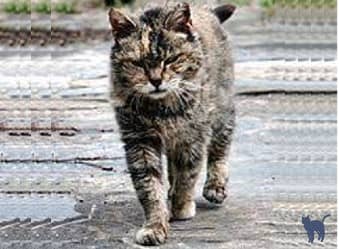
If those are the reasons your pet becomes aggressive, it will most likely nibble during play and other interactions as well.
But don’t worry, I’ll show you how to stop this annoying behavior later on. Even if your cat has issues with socialization.
# 4 Your Cat Has a Medical or Behavioral Condition
If your pet attacks you for no reason, and you see no sign of overstimulation, it may have a medical problem. The following are the most common causes of this reaction:
- Polyps that cause inflammation;
- Arthritis and joint discomfort;
Dental problems; - Hip dysplasia (an orthopedic disorder);
- Parasites (such as ear mites)

Consider also the possibility that your cat was injured or got ill as a result of a catfight.
Remember that cats’ natural impulse is to hide their injuries and illnesses. As a predator and prey, they’ve honed their “I’m fine, nothing’s wrong with me” behavior.
This is how they keep themself safe in the wild. That’s why many cat owners have no idea that something is wrong with their cat.
Then there’s all the stress, anxiety, and frustration they may feel because of a specific situation (you move to a new apartment for example). These behavioral conditions reduce the petting threshold your cat has.
If your pet begins to exhibit any medical or behavioral issues, take it to the veterinarian as soon as you can.
How to Stop Cat From Nibble When Petting
To begin with, it’s critical to understand that your cat is not mad at you. It is not trying to be mean to you or is seeking revenge against you for something. It is a reflex reaction to an unpleasant, irritating, or even painful sensation.
Here are some good ideas for getting your cat to accept petting sessions:
- Learn to recognize your cat’s warning signs;
- Associate your cat’s favorite things with petting sessions;
- Allow your cat to walk away from the petting sessions;
- Keep petting sessions short and leave your cat wanting for more;
- Schedule a playtime routine with your pet.
# 1 Learn to Recognize Your Cat’s Warning Signs
Pay attention to the cues your cat gives you before a nibble. Measure how long the petting session is until it becomes irritated. Then try to stay within this limit (the threshold).
Even though each cat is an individual, the majority of them show one or more of the following signals:
- Swish or flick their tail.
- Ears are flattened.
- Vocalize or hiss.
- Pupils can dilate like a pancake or narrow like a sliver.
Pay attention to the cues your cat gives you before a nibble. Measure how long the petting session is until it becomes irritated. Then try to stay within this limit (the threshold).
Even though each cat is an individual, the majority of them show one or more of the following signals:
- Swish or flick their tail.
- Ears are flattened.
- Vocalize or hiss.
- Pupils can dilate like a pancake or narrow like a sliver.

If you notice any of these signs, stop petting them right away!
Remember that if your cat nibbles you hard enough to draw blood, you should rush and wash the wound to avoid any infection.
# 2 Associate Your Cat’s Favorite Things With Petting Sessions
Cats are smart and can make the connection between good behavior and rewards. Find your cat’s favorite thing, like a treat or an interactive toy. Then associate it with your petting sessions. This way, you’ll be teaching your cat to enjoy being petted.
Once you reach your cat’s threshold for affection, stop petting it.
Give it the food or toy reward before it shows any signs of discomfort.

# 3 Allow Your Cat to Walk Away From the Petting Sessions
Do not restrain your cat in any way. You want your cat to LOVE these petting sessions, rather than feel forced or trapped.
As cats are very territorial, if you appear as an imposing big creature in their space, they may perceive you as a threat. Instead, approach them at their level and make sure to avoid blocking any exits.
Cats are more likely to bond with you if they believe they have control over their environment and can come and go as they please.
# 4 Keep Petting Sessions Short and Leave Your Cat Wanting for More

Pull your hand away for a moment and let them communicate, “Hey, human, you’re not done yet!”. In the meantime, they relax a little bit. So leave them wanting for more.
# 5 Schedule a Playtime Routine With Your Cat
The best way to avoid any type of cat aggression is to play with it. Recent research shows that playtime with their owners is what cats enjoy the most. This also keeps your cat mentally and physically active, as well as healthy.
Your goal is to exhaust your cat so that when it comes time for petting sessions, it will be more willing to be petted.
To do so, set aside 30-45 minutes for playtime every day. Divide playtime sessions into 10-15 minutes each. That’s because most adult cats cannot stand long playtime sessions.
If you’d like to use a toy, wand toys with feathers at their tips are perfect.
They move like prey and stay at a safe distance from your body. Your cat will be less likely to nibble on you.

Where Should I Not Touch My Cat
Many cat owners are unaware of what makes their pets happy. The first common source of confusion is where it is okay to pet them. And of course, the second one is which parts of their body they should never touch.
Cats, in general, dislike being touched because it is not natural to them. They have learned to tolerate caresses and to feel pleasure as a result of domestication.
However, this depends a lot on the age at which it first interacted with humans and its personality. As a general rule, take into account the following areas to avoid:
The tail
A cat’s tail is an extension of its spine. Because there are so many nerves, muscles, and small bones interconnected there, it is a very sensible area. Avoid touching it too much.
The belly
Rubbing cat bellies is also a bad idea. The cat’s belly is the most vulnerable area of its body because it is soft and contains internal organs. Most cats will avoid exposing it. Do not touch it even if your cat lies on its back, showing it as a sign of trust.
The paws
Cats dislike having their paws touched because they are densely packed with nerve endings. This makes it an extremely sensitive part of its body. Especially in older cats that may have joint problems, and rescued cats that may have had negative contact experiences in the past.

If a cat’s paw is injured, touching it can also be painful to them.
If you have children, you must pay close attention. Children are captivated by the movements of a wagging tail. A cat’s belly is attractive too as this part is soft and cuddly.
Make sure to teach your children to avoid touching all of these sensitive areas. This will reduce the likelihood of your cat biting or scratching your kids.
Where Do Cats Like to Be Touched the Most?
Cats use to rub cheeks and chin against objects and humans. Scent glands are located around those areas. This means that they are used to non-threatening sensations in these places. That’s the reason why these are the most common areas where cats like to be touched.
Here’s a list of some of the places cats like to be petted:
- The top of their head;
- The neck;
- Under the chin;
- Around the ears;
- The cheeks.
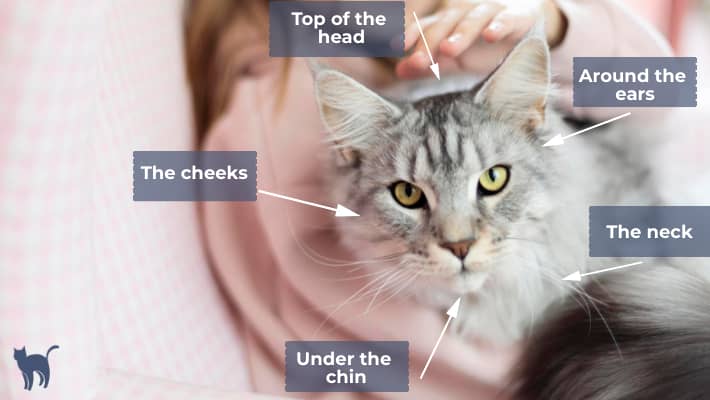
A lot of cat owners, myself included, have this tendency when we pet our cat of going from head to tail. We do this automatically and unconsciously.
While some cats are cool with that, others will be like: “Hey dude, you touched my tail again”. And that puts you on the black list.
So, if you’d like to have a better relationship with your cat, you should put what you’ve learned today into practice.
Notice if:
- If their tail begins to twitch and then gradually expands into a larger twitch as they sit; or
- If their eyes dilate; or
- If their ears begin to pin back.
Those are red flags that tell you to stop.
Let them tell you where they enjoy being touched. They are certainly not shy about telling us what they like and what they don’t!
Final Thoughts
Every cat is unique. Some cats enjoy being petted and handled, while others prefer to be left alone. Many of these distant cats have their unique ways of expressing affection. Which may or may not include abundant touching.
Your cat may be one of those who enjoy napping on the couch next to you. Or love resting on your warm lap. At the same time, it doesn’t like to be stroked or fussed over.
Cats are attracted to humans because of the presence of interactive toys. Interestingly enough this is what some recent studies suggest.
Toys like a wand with feathers, strings, or other play-like attachments that evoke a cat’s predatory behavior. Frequent interactive play is an excellent way to bond with your feline and keep them fit.
Bottom line: pet less and play more with your cat.





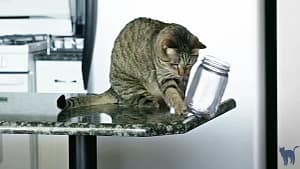

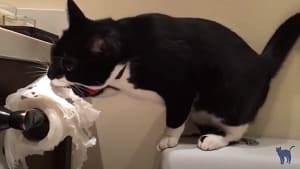
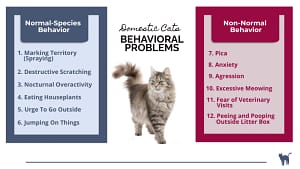


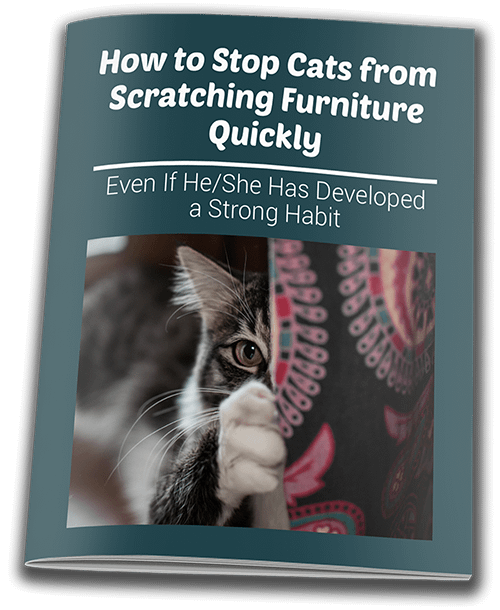
One Response
Thank you!